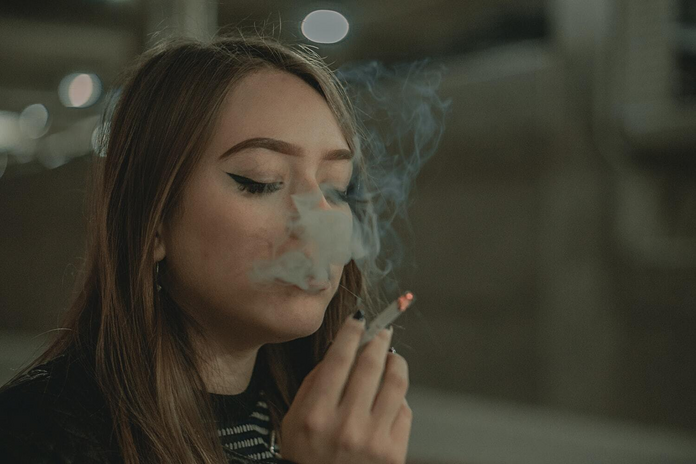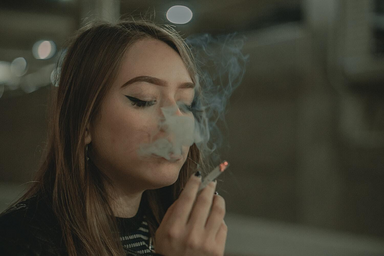Would you judge me for liking the on-screen portrayal of cigarette smoke? Or enjoying watching a couple of friends making merry-go drunk memories- laughing, dancing, singing, crying and consoling? I may be anti-Kabir Singh, but the scene with him in goggles and smoke everywhere is gorgeous. There’s also the creative genius, who smokes a cigar, writes the best piece of their life while some amazing musical score plays in the background. This brings me to the end of my confessions.
What irks me about the portrayal of drugs is people opening about their uncomfortable emotions after downing a two. This may point at how socially hierarchic emotions can be. But ‘nashe’, as the Hindi lingo goes, are an on-screen and off-screen prop. A prop to achieve a specific type of cinema or Instagram aesthetic, as well as a personal and social image.
Countless scripts contain a crucial confrontation or dance number or both, situated against the setting of a pub/disco/rave party. One of the signature scenes of James Bond movies is the spy, sitting at the bar counter and making an eye contact with the breathtaking female lead. In Bollywood, this relation surfaces in famous songs connecting the eye candy to some intoxicant. Men engaged in serious thinking are shown with a tobacco pipe and adventurous sporty characters smoke cigars. In an article written in 1998, The Baltimore Sun wrote-
“Pipes are about reflection; cigars about aggression.Cigars are $1,000 suits, stock options, swagger. Pipes are jackets with elbow patches, tenure, avuncularity.”
From a filmmaker’s perspective, smoking focuses attention on a person’s face and works particularly well with black/white or lo-fi lighting. It adds an extra nuance for showing characters’ emotions. Short puffs and fast blows mean the character is in a hurry while long pulls and slow blows indicate a relaxed mood.
The visual appeal perspective furthers with social media’s nashe Aesthetic. Clinking bottles or wine glasses, cigarettes/weed against a cool background, hookah pipe and smoke rings shot from sharp angles or just low-resolution photos of people posing with droopy eyes and sly smiles. (If you’re still confused about what aesthetic I am getting at, then quickly type “Alcohol Aesthetic” on Pinterest or Tumblr). This might be an exhibitionist display but like everything else that makes life enjoyable, nashe, for people who find (balanced not debilitating) pleasure in them, deserve a public display. Some people post sunsets, some people post sunset-colored martinis. Though is there something that makes the latter preference more systemic?
It is no secret that nasha ( a Hindi word for intoxicants) has consciousness-altering capabilities and a common notion is that people have the best ideas when they are high. Creative and intellectual geniuses across time and space have been dependents. Sherlock Holmes had the ‘three pipe problem’, which meant he had to smoke three whole pipes before solving certain cases. Jean-Paul Sartre, Bertrand Russell, Albert Einstein, Carl Jung were some famous pipe smokers. Writers of Rigveda( a Hindu treatise) wrote divine poetry and drank soma (a plant elixir). The free-verse poetry produced by beatniks, peace and sexual liberation chatter of hippies, endeavors for spiritual explorations at ashrams were all, in some way, linked to varied intoxicants. A 2017 study showed that creative people are drawn to marijuana more than the others. In this study, smokers outperformed non-smokers with respect to a test measuring convergent thinking which is arriving at one best solution from a finite number of ideas. This might be extended to mean that these thinkers used intoxicants as a self-optimization tool to support their knowledge on a matter they were already deeply engaged in. Nasha, in isolation, did not produce the genius.
Another popular notion is that drunk girls look hot. Alcohol or any soft intoxicant becomes a prop for attractiveness. On-screen representations have exemplified or maybe even created this image of a woman with smudged kohl, aesthetically tangled hair and glamorous dress, living her life on her own terms. Maybe it is an acknowledgement of the fact that women are conditionally inhibited and having a drink unleashes their real uninhibited self. Perhaps, it’s about the sexiness of being yourself? Or maybe it’s the male gaze. An uninhibited woman becomes unwary of the male eye, or more likely to do what the man wants, making them easy targets of male fantasy.
One of the battles of feminism was fought in the realm of intoxication, although its fuel was possibly ignited as a corporate effort in the 20th century. Sigmund Freud’s American nephew, Edward Bernays used Freud’s ideas and showed corporates how to make people buy things they did not need by associating manufactured goods with unconscious desires. George Hill, president of the American Tobacco Association, sought Edward’s advice on reaching half of the market at a time when women smoking tobacco in public was a taboo. Psychoanalysts saw cigarettes as a symbol of the male sexual power the phallus. Bernard set out to connect women smoking cigarettes as a challenge to male power. He staged a drama at a mass parade. Young rich debutantes were told to hide cigarettes underneath their clothes and at his signal, they joined the parade and simultaneously lighted their cigarettes. On the back-end, media was told that a bunch of ‘suffragettes’ were lighting cigarettes as ‘torches of freedom’. Anyone supporting gender equality now had to approve of women smoking in public, even though the event had no practical relation to gender equality. Cigarette smoking became a symbol of an independent and strong woman; an idea that still persists.
Edward showed that rather than selling to people’s intellect, irrelevant objects can be branded as powerful emotional symbols. Surrogate marketing employed by alcohol brands furthers this point. Since they are prohibited from directly advertise alcohol on televisio in India, brands ride on another surrogate products to advertise alcohol. The advertisement of Seagram’s ‘No.1 Yaari’ and Barcardi’s music videos make people want to leave everything for a night of partying on a beach. Similarly, James Bond movies are a marketing space for alcohol, cars and electronics brands.
This tendency of wanting without needing may have prevailed before the industrial capitalism of the 20th century. But over the years, the emotion of FOMO has been democratized. More props are needed to make you a part of the crowd. It is said that when you are drunk, everything seems attractive because your sense of symmetry is numbed. GEN Z has found a sober version of this aesthetic with the deliberately shaken pictures clicked manually through HUJI or Snapchat. Or maybe, the sober version of appreciating asymmetry has prevailed already- in the wakeful subscription to irrational impulses.


